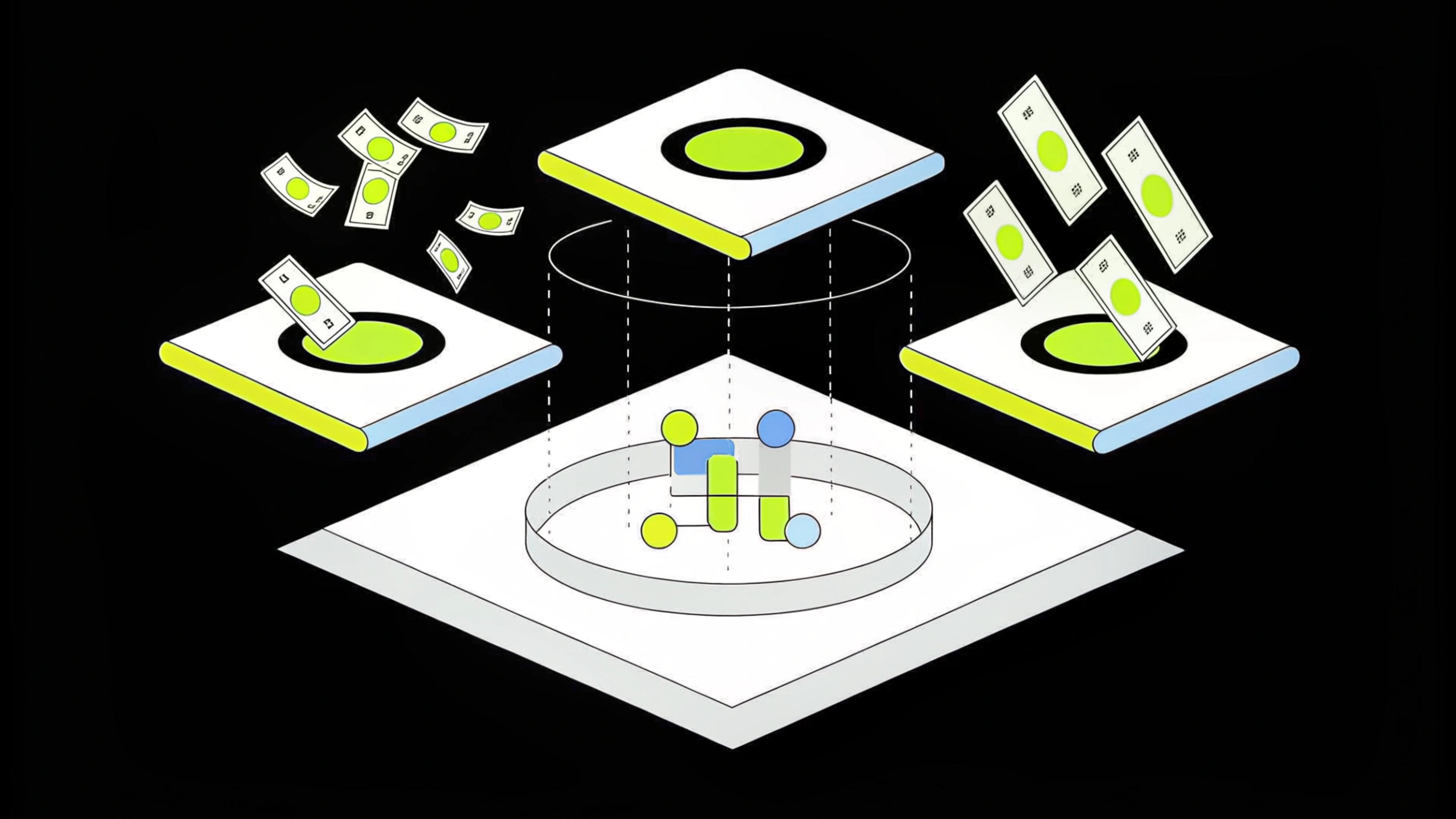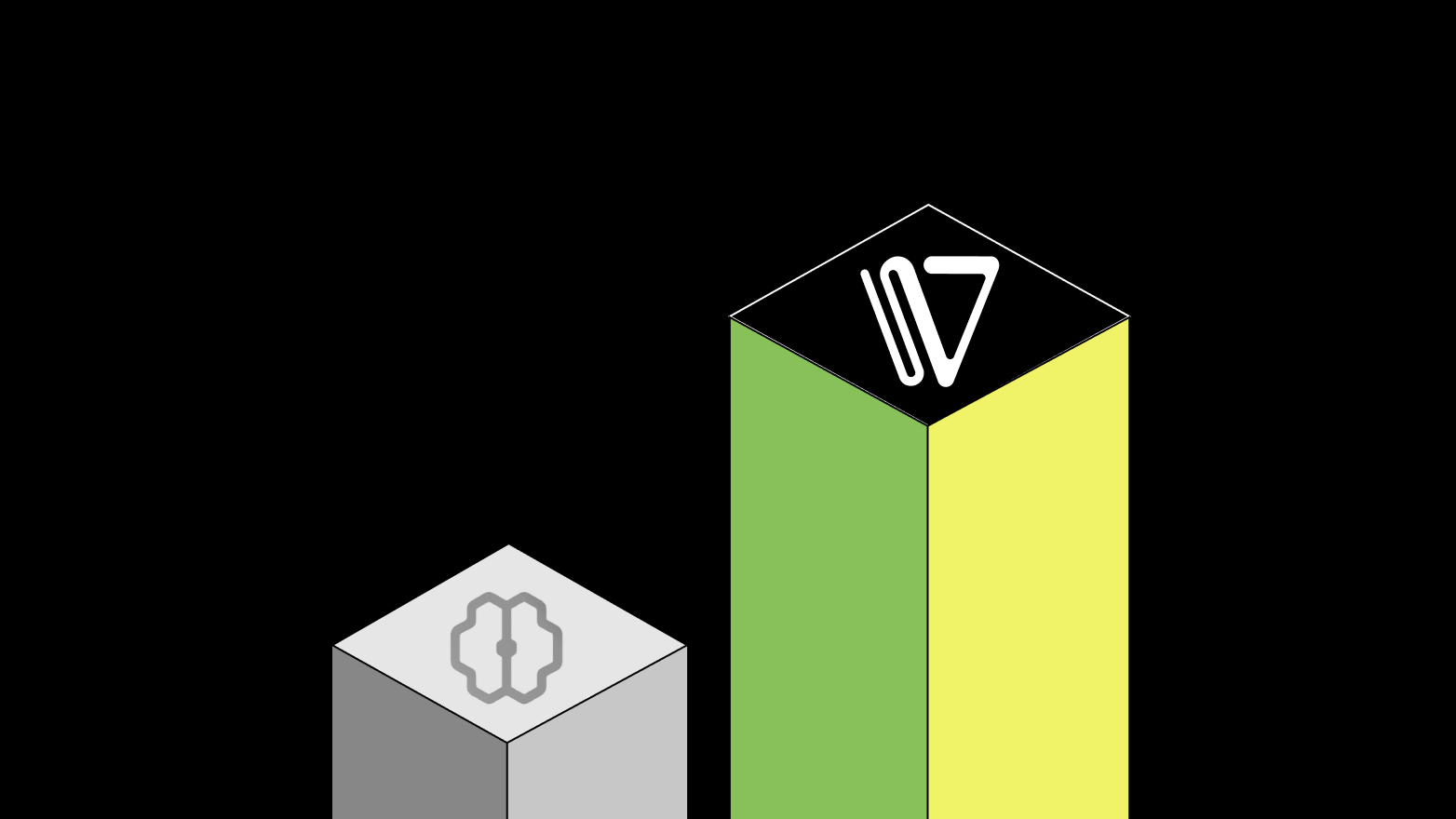The High Cost of Sticking with Closed AI

Around the world and across industries, enterprise AI teams routinely face a decision: stick with proprietary platforms or embrace the open source ecosystem. Closed-source solutions promise convenience and support, but they fall short where it matters most: flexibility, security, cost, and interoperability.
Open source isn’t merely catching up with proprietary solutions; it’s pulling ahead, fueled by rapid community innovation, transparent development practices, and the freedom to tailor applications without vendor constraints. AI’s most important breakthroughs, from state-of-the-art models to the infrastructure that powers them, are happening in the open source world.
Teams that recognize this shift now will gain lasting competitive advantages in innovation speed, cost efficiency, and technical flexibility. Those that do not risk vendor lock-in and falling further behind the innovation curve. The choice is clear: open source AI isn’t just the future, it’s the engine of AI progress.
Teams that recognize this shift now will gain lasting competitive advantages in innovation speed, cost efficiency, and technical flexibility. Those that do not risk vendor lock-in and falling further behind the innovation curve. The choice is clear: open source AI isn’t just the future, it’s the engine of AI progress.
The rise of open source AI
The idea that proprietary AI solutions hold an enduring technical edge is quickly becoming outdated. Across much of the AI infrastructure stack, open source has already reached parity (or even surpassed proprietary offerings) in key categories like orchestration, monitoring, and deployment.
The one area where proprietary platforms still maintain an advantage is at the absolute frontier of foundation models. With each new release, closed models from the likes of OpenAI and Anthropic tend to set the technical bar. But the gap isn’t what it used to be—and it’s closing fast.
A clear pattern has emerged: proprietary models may take the lead initially, but open-source models like Llama and Mistral rapidly catch up, often within months. Each time this cycle repeats, the catch-up window gets shorter, and the performance gap narrows. Meanwhile, open models continue to offer distinct advantages in flexibility, auditability, and deployment control.
In other words, the frontier might still belong to proprietary players for now, but open source is defining the future of enterprise AI in every other layer of the stack, and even the frontier is becoming more competitive with each cycle.
The market doesn’t care about your product roadmap
One of open source’s biggest advantages over closed systems is research-to-production velocity. Proprietary vendors gate-keep new capabilities behind product roadmaps, but with open source, you can get access to cutting-edge research immediately.
Hundreds of AI research papers are published daily, which means companies can either A) wait months—or even years (!)—for cloud vendors to add new features to their managed services, or B) put their development team to work implementing the latest techniques right now.
Consider recent breakthroughs in AI research that sped to productization in open-source components:
- Retrieval-Augmented Generation (RAG): Open source implementations became available shortly after publication. For example, Haystack integrated a RAG pipeline in v0.3.0, released only two months after the original RAG paper.
- LoRA and QLoRA fine-tuning: These sorts of findings were accessible through Hugging Face before cloud vendors offered managed services.
- Advanced prompting techniques: Methods like chain-of-thought and tree of thoughts were implemented in open-source libraries such as LangChain shortly after the papers introducing them were published, sometimes within weeks.
So, why such a difference? Cloud vendors follow a predictable pattern: announce research, build internal prototypes, navigate product management priorities, then release managed services down the line. Open source, by its very nature, bypasses traditional product release friction and accelerates production-ready functionality.
In AI, speed isn’t just a competitive advantage; it’s survival. Delayed access to innovation can mean falling behind in markets where every insight counts.
The “one-size-fits-none” problem
For more than two decades, vendors have promised to “democratize AI” or “democratize data science,” but those promises have largely failed. The reason is simple: no two enterprises face the same challenges, and one-size-fits-all solutions rarely fit anyone well.
Cloud platforms offer comprehensive toolsets that appear complete on paper. SageMaker, Vertex AI, and Azure ML all offer experiment tracking, model registries, training infrastructure, and inference engines. Great. But the problem isn't missing components; it's enforced standardization.
Let's look at a few industry requirements that break the mold:
- Healthcare: Medical imaging requires DICOM viewers for model debugging, regulatory compliance tracking, and specialized evaluation metrics for diagnostic accuracy
- Financial services: Models need bias detection for lending decisions, explainability for regulatory audits, and real-time fraud detection with microsecond latency requirements
- Manufacturing: Predictive maintenance demands sensor data processing, integration with SCADA systems, and domain-specific feature engineering
These kinds of specialized requirements don’t fit neatly into prepackaged, one-size-fits-all AI platforms. Enterprises need the freedom to customize every layer of their AI stack to meet their unique challenges. Without that flexibility, off-the-shelf solutions become bottlenecks rather than accelerators of innovation.
Ultimately, standardized platforms force businesses to conform to the tool, instead of allowing the tool to serve the business. Open-source AI flips this dynamic, putting control, customization, and speed back in the hands of enterprise teams.
BLOG: Why Cake beats SageMaker for Enterprise AI
The integration illusion
Cloud vendors sell the idea of seamless integration, but in reality, their ecosystems often require as much custom integration as building it yourself using open source components, sometimes more.
Despite sharing the same brand name, components within cloud platforms often require significant integration work. Teams still spend weeks connecting experiment trackers to model registries, configuring inference pipelines, and building monitoring dashboards.
The integration promise becomes particularly hollow when enterprises need capabilities the platform doesn't provide. Adding external tools to cloud vendor stacks often requires more engineering effort than building with open-source components from the start.
The big-tech exception at the top
Okay, there is one exception worth noting, even if it’s accessible to very few. The only truly successful proprietary AI platform approach is what the biggest and best-capitalized and tech-forward organizations (Google, Meta, Netflix, etc.) do: hire hundreds of well-compensated engineers to build exactly what you need, customized for your specific requirements. Precious few businesses would have the ability to pull off something like that, but open source gives you a way to get similar results.
The integration promise becomes particularly hollow when enterprises need capabilities the platform doesn't provide. Adding external tools to cloud vendor stacks often requires more engineering effort than building with open-source components from the start.
The lingering open source skepticism that really needs to go away
Enterprise adoption of open-source AI often stalls on perceived risks around security, governance, and support. These concerns, while understandable, reflect outdated assumptions about open source maturity.
Security: transparency as strength
Open source provides superior security through transparency. When vulnerabilities exist in proprietary systems, enterprises depend entirely on vendor disclosure and patching schedules. Open-source code undergoes continuous scrutiny from global developer communities, enabling faster detection and resolution of vulnerabilities.
Open source delivers auditability through full source code inspection for compliance and security reviews. Organizations gain independence from vendor security practices and response times, while benefiting from community oversight where thousands of developers review code compared to closed vendor teams. When vulnerabilities happen, community-driven fixes become available within hours rather than waiting for vendor update cycles.
Governance: control and compliance
Open source simplifies governance by providing complete visibility into system behavior. Enterprise teams can audit algorithms for bias, fairness, and regulatory compliance while controlling data flows without vendor black boxes. Organizations maintain compliance logs with full system transparency and implement custom governance policies without vendor constraints.
Support: enterprise-grade options
The support landscape has matured significantly. Organizations can access community support through active forums, documentation, and peer assistance or choose commercial support from companies like Red Hat and SUSE that provide enterprise SLAs. Hybrid models combine internal expertise with targeted consulting, while partner ecosystems offer system integrators specializing in open-source implementations.
The undeniable economics of open-source AI
The total cost of ownership comparison between open source and proprietary AI solutions reveals significant advantages beyond initial licensing savings.
Infrastructure efficiency
Open-source AI lets you optimize your entire infrastructure stack. You can run on any cloud, on-premises, or mix both while fine-tuning everything for your specific workloads. You'll see exactly what infrastructure costs without vendor markup, and scaling becomes more efficient since you're paying for actual compute and storage instead of per-seat or per-API-call fees.
The real cost of inadequate tooling
Poor tooling decisions create expensive consequences that extend far beyond technology budgets. Drift detection illustrates this perfectly: Zillow's billion-dollar loss during the pandemic resulted from models that couldn't adapt to rapidly changing real estate prices. Proper drift monitoring would have detected the problem and triggered model retraining before losses accumulated.
Similar patterns occur across industries: credit modeling failures when economic conditions shift without proper monitoring, recommendation engine degradation as user behavior changes post-implementation, fraud detection gaps when attack patterns evolve faster than model updates, and supply chain disruptions from demand forecasting models trained on pre-pandemic data.
These failures share common characteristics: inadequate monitoring, inflexible retraining pipelines, and tooling that doesn't support rapid model iteration. Open source ecosystems provide the specialized monitoring, evaluation, and deployment tools needed to prevent such failures.
Long-term cost predictability
Proprietary platforms introduce unpredictable cost escalation through per-user licensing changes, feature gating behind higher tiers, and expensive vendor switching. Open source provides cost transparency and strategic independence—technology choices based on merit rather than vendor relationships. This enables accurate long-term budgeting without forced migrations.
The Red Hat model for AI: Cake's solution
At this point, open-source AI may sound like it solves everything, but there is a reason it hasn’t been universally adopted. While the technical advantages are clear, the biggest challenge for most enterprises isn’t technology. It’s operational complexity.
Enterprise teams aren’t resourced to spend time configuring infrastructure, stitching together tools, and managing low-level systems when they could be focused on driving business outcomes: building better models, faster applications, and smarter customer experiences, ultimately impacting revenue, cost, and risk.
Opinion: Why I Co-Founded Cake: Unlocking Frontier AI For Everyone
This is exactly the challenge that drives Cake’s mission: to make open source AI not just powerful, but practical for the enterprise. When breakthrough capabilities emerge in the open source ecosystem, you shouldn’t have to wait months for managed services to catch up—or spend engineering cycles integrating them yourself.
We see this challenge as similar to what early Linux adopters faced. In the beginning, running Linux meant manually configuring every piece of the system: writing makefiles, managing dependencies, and building everything from the ground up. That changed when companies like Red Hat and Canonical emerged to package complex software into enterprise-ready distributions. Developers no longer had to reinvent the wheel—they could focus on innovation, not configuration.
AI infrastructure today faces the same complexity problem, but with even more moving parts. A typical enterprise Retrieval-Augmented Generation (RAG) deployment, for example, requires:
- Data pipelines for document ingestion, parsing, chunking, embedding, and vector storage
- Query processing through analysis, hybrid search, re-ranking, and context assembly
- Response generation with LLM inference, output validation, and compliance checks
- End-to-end monitoring for quality, cost, and performance
Each step demands specialized tools—vector databases, inference engines, evaluation frameworks—and none of them work seamlessly out of the box.
Cloud vendors offer partial solutions, but rarely the best tool for each job. Worse, integrating proprietary services with external open source components often takes as much or more engineering effort as building open source from the start.
Cake solves this problem by packaging best-in-class open source AI components into an integrated, enterprise-ready platform. We give you pre-configured, security-hardened, and scalable deployments, so your team can focus on model training, fine-tuning, and delivering AI-driven products, not managing infrastructure.
When new innovations emerge in the open source ecosystem, Cake makes them available fast, with the compliance, auditability, and operational guardrails that enterprises require. You get choice without complexity—and speed without sacrifice.
Choice architecture vs. vendor lock-in
The architectural flexibility difference is huge. Open source ecosystems let you pick the best tool for each job, choosing what actually works for your specific needs. Proprietary platforms force bundled solutions: you receive their experiment tracker, their model registry, and their inference engine, regardless of whether they're right for you or not.
This flexibility eliminates vendor lock-in while enabling optimization across the entire stack. Instead of settling for bundled compromises, you can select Milvus for vector search, MLflow for experiment tracking, and specialized inference engines based on performance requirements rather than vendor partnerships.
Open-source AI will eventually dominate enterprise deployments—the technical trajectory makes this inevitable. The critical question is whether your organization will lead this transition or follow it.
About Author

Skyler Thomas
Skyler is Cake's CTO and co-founder. He is an expert in the architecture and design of AI, ML, and Big Data infrastructure on Kubernetes. He has over 15 years of expertise building massively scaled ML systems as a CTO, Chief Architect, and Distinguished Engineer at Fortune 100 enterprises for HPE, MapR, and IBM. He is a frequently requested speaker and presented at numerous AI and Industry conferences including Kubecon, Scale-by-the-Bay, O’reilly AI, Strata Data, Strat AI, OOPSLA, and Java One.
More articles from Skyler Thomas
Related Post
.png)
The 5 Paths to Enterprise AI (And Why Most Lead to Trouble)

Skyler Thomas

The Future of AI Ops: Exploring the Cake Platform Architecture

Skyler Thomas

The AI Budget Crisis You Can’t See (But Are Definitely Paying For)
Skyler Thomas & Carolyn Newmark

Why Cake Beats AWS SageMaker for Enterprise AI

Skyler Thomas